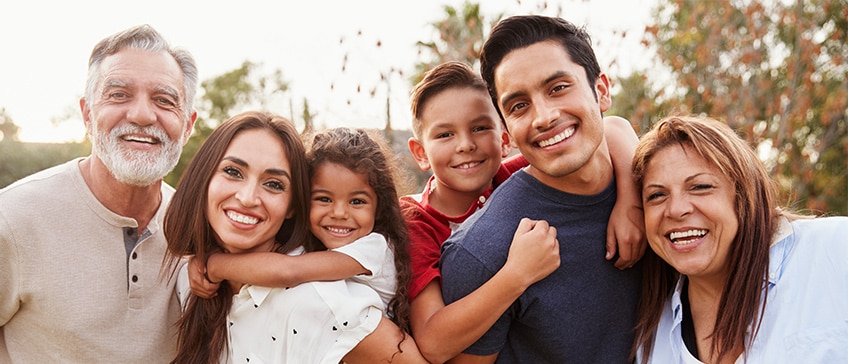Parents' DNA & Substitutes
One of the top questions people have about their AncestryDNA® test results is where their ancestors came from. The answer to that question about ethnicity estimates can be found in the Origins option of the DNA drop-down menu on Ancestry®.
Another top question AncestryDNA® test takers typically have—especially those who are also researching their family history—is how they can tell whether genetic matches come from their mother’s side or their father’s side.

Parental DNA Testing
The most direct way to separate parental matches into your mother's and your father's sides is to test both biological parents with the autosomal AncestryDNA test, if you can. Once you link their results to your family tree with AncestryDNA®, you will automatically see a new Mother and/or Father filter option at the top of your genetic match list page next to the Hints, New, and Starred tabs.
This means that if you have tested your mother, you can click the filter to see all the DNA matches you share with her. This will narrow down the DNA cousin matches that probably belong to your maternal side of the family. Same goes for the Father filter. Learn more about using match filters.
If you're able to test only one parent, you can still sort your matches by that parent with the filter. Click the star icon on the left side of all the matches that show up. By default, you’ll then know that matches without a star most likely belong on the other side of your family.
AncestryDNA Can Automatically Sort Your Matches
AncestryDNA developed a first-of-its-kind technology, called SideView™, which is able to sort your DNA matches based on the parental lineage they belong to.* SideView™ works by “organizing” your DNA into the halves inherited from each parent. When we first read your DNA, however, we can’t tell which parts of your DNA came from which parent. In order to sort this out, SideView™ uses your DNA matches.
Because a match is usually related to you through only one parent, your matches can help us organize the DNA you share with them. You can think of these matches like magnets that separate your DNA into the halves inherited from each parent. As we separate your DNA into the two parental halves, we keep track of which matches are connected to each parental side.
As we can’t tell you which parent your matches correspond to just by looking at the DNA, you’ll still need to figure out which set of matches are from your paternal and maternal lineages. There are a few strategies you can try, the easiest is if you can recognize one of the matches and how you are related to them. Once you label someone as from your maternal line, for example, SideView™ can then suggest other maternal matches based on shared segments of DNA. It also helps if at least one of your parents takes an AncestryDNA test, which enables us to label a group “maternal” or “paternal.”
Finding Common Ancestors Through DNA Tests of Other Relatives
If you're trying to create a surrogate DNA profile for one or both parents, testing other biological family members can help you build up that substitute or surrogate profile. But because genetic inheritance is random, unless your parent has an identical twin, you will need to consider who else could contribute DNA test results as a surrogate of sorts. Luckily, you have multiple options. And in this case, the more family members you can test, the better. These are the most common ones to consider.
- A biological sibling is not going to be a perfect stand-in, but they can be a good start. And don't forget your own half-siblings. Shared matches between you will be from the same side of your family tree as your common parent.
- Biological aunts or uncles can help you identify shared matches that come from the maternal or paternal half of your family tree.
- Biological first cousins may enable you to focus on one branch of your family tree, if an aunt or uncle isn’t available for a DNA test.
- Biological second cousins can also help you discover matches where you share the same grandparents, if testing first cousins, aunts or uncles, or siblings isn’t an option.
Having multiple family members take an AncestryDNA test can be a fun way to explore your family history together—to talk about the genetic heritage you have in common as well as the differences. Find your genetic matches through an AncestryDNA® test.
*Some DNA features require an Ancestry subscription.